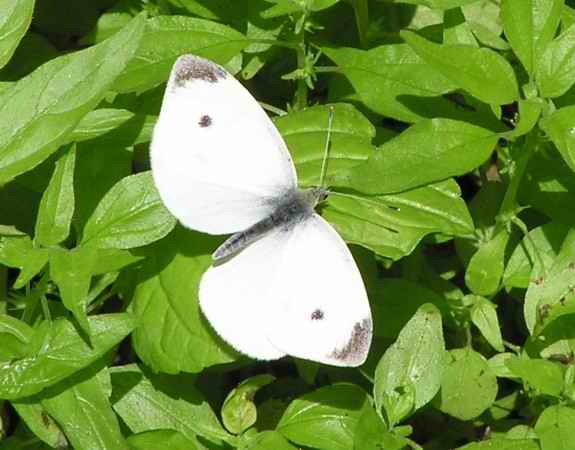|
Common Name: Cabbage White Butterfly, European White Butterfly Scientific Name: Pieris rapae (The Genus name Pieris is from Greek mythology. Pierus was a Macedonian king who had nine daughters. They challenged the Muses for the prize of poetry. Apollo, as the God of music and consort of the Muses, turned the nine daughters into nine magpies and the Muses took their name; rapae means turnip)
The Cabbage White is aptly named as it lays its eggs on plants of the crucifer family (Cruciferae from Latin crux, cross, and ferre, to bear; refers to the arrangement of the flower petals in a cross), which includes cabbage, broccoli, Brussels sprouts, cauliflower and horseradish. These plants contain mustard oils that are sensed by the female to deposit the eggs so that the larvae will be able to feed when they hatch.
The imported cabbageworm, as it is known in the larval stage, was accidentally introduced by cargo ship to Quebec City, Canada from Europe in 1860. It is a prolific breeder, as the entire life cycle takes only three to six weeks which can result in up to eight generations every year in the south. Therefore, the Cabbage White quickly spread, reaching California by 1866, New England by 1871 and the entire eastern United States by 1881. It has since spread to Hawaii, Australia, Bermuda and New Zealand. The larvae feed on the host plants, and, if it is left unchecked, it will reduce them to stems.
The sex of the Cabbage White can be readily determined, as the male has a single dark spot on the outer edge of the upper (dorsal) side of each wing and the female has two spots. The sex can also be determined by observation. The male shows interest in a female by zigzagging up and down both below and in front of her until she lands. This is known as the spiral flight. If the female is receptive, mating occurs. |
